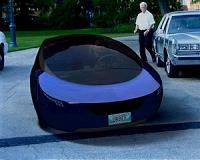 |
Brussels (AFP) Nov 4, 2010 Italian and Japanese auto giants Fiat and Toyota are bang on course to smash through European Union carbon emissions targets years ahead of schedule, new analysis showed Thursday. A European Commission-funded study of new cars manufactured in 2009 by the European Federation for Transport and Environment showed both automakers just short of the EU target of 130 grammes of CO2 per kilometre (g/km) by 2015, on 131 and 132 respectively. Powerful German brands produced by BMW (151), Volkswagen (153) and Daimler (Mercedes hit 167) brought up the rear. In 2008 carmakers successfully pushed back from 2012 to 2015 the deadline for technological innovation, allowing them to meet stipulations, in exchange for a commitment to drop to 95 g/km by 2020. Despite not insignificant loopholes, they can be heavily fined if they miss these targets as the EU strives to meet wider aims in reducing emissions of harmful gases blamed for negative climate change effects. "All available evidence suggests that carmakers in Europe are heading for very significant overcompliance' with the CO2 regulation and are hence likely to hit the target for 2015 years in advance," said author Jos Dings in the report. Taking 14 major manufacturers together, the car industry as a whole reduced its "sales-weighted average emissions of CO2/km by a record 5.1 percent in 2009." The report, which can be found at www.transportenvironment.org, said Toyota made the biggest progress in 2009, recording "a 10 percent improvement in fuel efficiency over the year." The authors highlighted the effects of the financial crisis and government subsidies for new cars, "shifting demand to cheaper cars which are typically smaller and pollute less." But it stressed that "actually at least half of the reductions in 2009 were achieved through better drivetrain technology." The researchers hope the results will influence negotiations on emissions targets for light trucks and other commercial vehicles. The report spells out that one litre of petrol consumption leads to about 2.34 kilos of CO2, and one litre of diesel to about 2.62.
earlier related report A lot of rare metals are needed to make photovoltaic panels, rare earth magnets for wind generators, fuel cells and high-capacity batteries for hybrid and electric vehicles. But most industrialized nations, including the United States, are almost entirely dependent on foreign sources for those metals. The only way this is going to change is if there is more domestic exploration and mining. "There's a misunderstanding in the public about moving to alternative energy and moving from mining, which can't be done," said James Burnell of the Colorado Geological Survey. There is a long list of scarce metals needed for alternative energy and transportation. Metals like gallium, indium, selenium, tellurium, and high purity silicon are needed to make photovoltaic panels. To make batteries there's zinc, vanadium, lithium and rare earth elements as well as platinum group minerals for fuel cell-powered vehicles. One of the biggest players in the scarce metals game is China, and they are starting to play hard ball, says Burnell. China is preparing to build 330 giga-watts worth of wind generators. That will require about 59,000 tons of neodymium to make high-strength magnets - more than that country's annual output of neodymium. China supplies the world with a lot of those rare earth elements, like neodymium, and will have little or none to export if it moves ahead with its wind power plans. "So the source for the West is problematical," said Burnell. Trade wars are on the horizon, he predicted. Yet policy makers and the public seem only superficially aware of the problem. "It is obvious that Japan was upset by the practical pause of rare earth export by China in late September," said Yasushi Watanabe of the Institute for Geo-Resources and Environment in Tsukuba, Japan. New sources of these critical metals are needed, said Watanabe, as well as new methods for extracting the rare elements from different kinds of rocks. "Extraction methods of metals from new minerals and materials are not well established," said Watanabe. "We need to develop new (refining) and smelting methods for new type ores." We also need to find those ores and start exploiting them, said Burnell. That means more mining. It's the only way we can stay competitive in the new energy future.
Share This Article With Planet Earth
Related Links Car Technology at SpaceMart.com
 First Car To Have Entire Body 3D Printed
First Car To Have Entire Body 3D PrintedMinneapolis MN (SPX) Nov 04, 2010 Stratasys has announced its development partnership with Winnipeg engineering group, Kor Ecologic. The engineering group is creating one of the world's most fuel-efficient and environmentally friendly vehicles. Code-named, Urbee, it is the first car ever to have its entire body 3D printed by additive manufacturing processes. The electric / liquid-fuel hybrid reaches more than 200 mpg, high ... read more |
|
| The content herein, unless otherwise known to be public domain, are Copyright 1995-2010 - SpaceDaily. AFP and UPI Wire Stories are copyright Agence France-Presse and United Press International. ESA Portal Reports are copyright European Space Agency. All NASA sourced material is public domain. Additional copyrights may apply in whole or part to other bona fide parties. Advertising does not imply endorsement,agreement or approval of any opinions, statements or information provided by SpaceDaily on any Web page published or hosted by SpaceDaily. Privacy Statement |